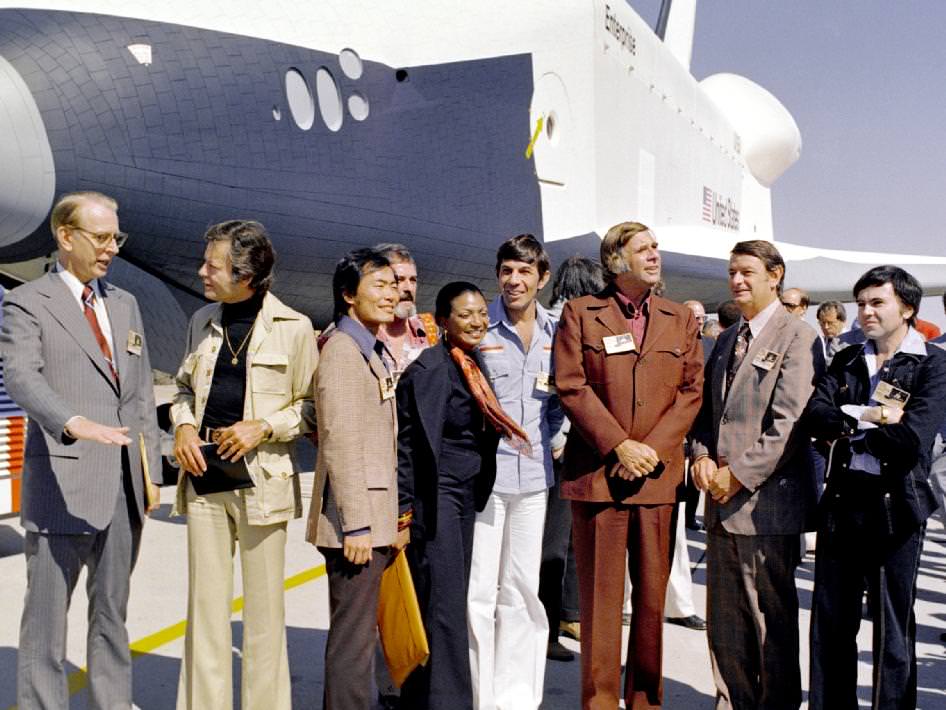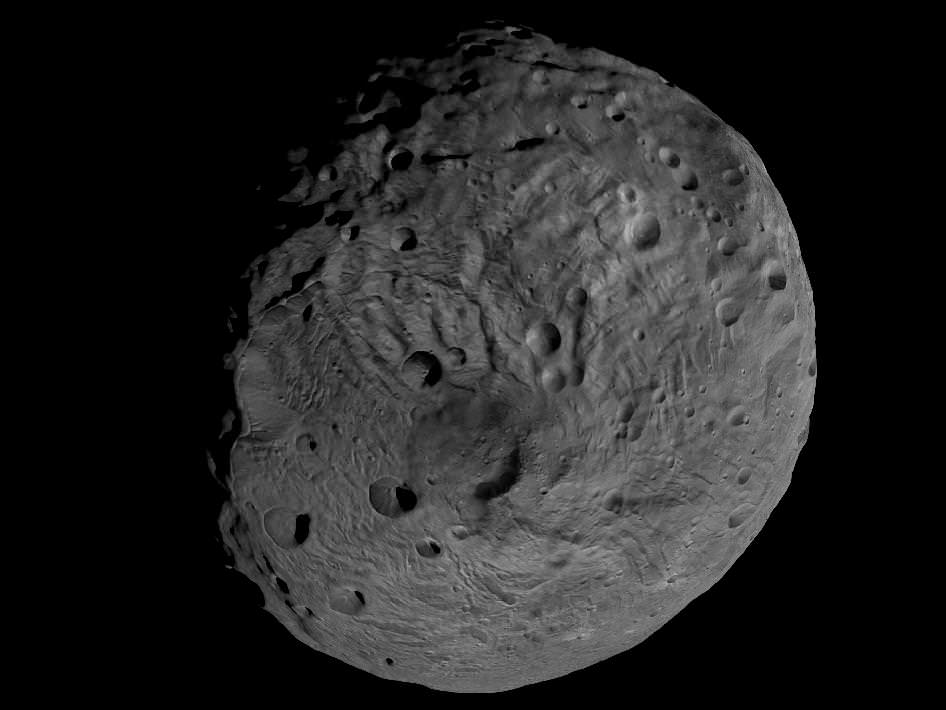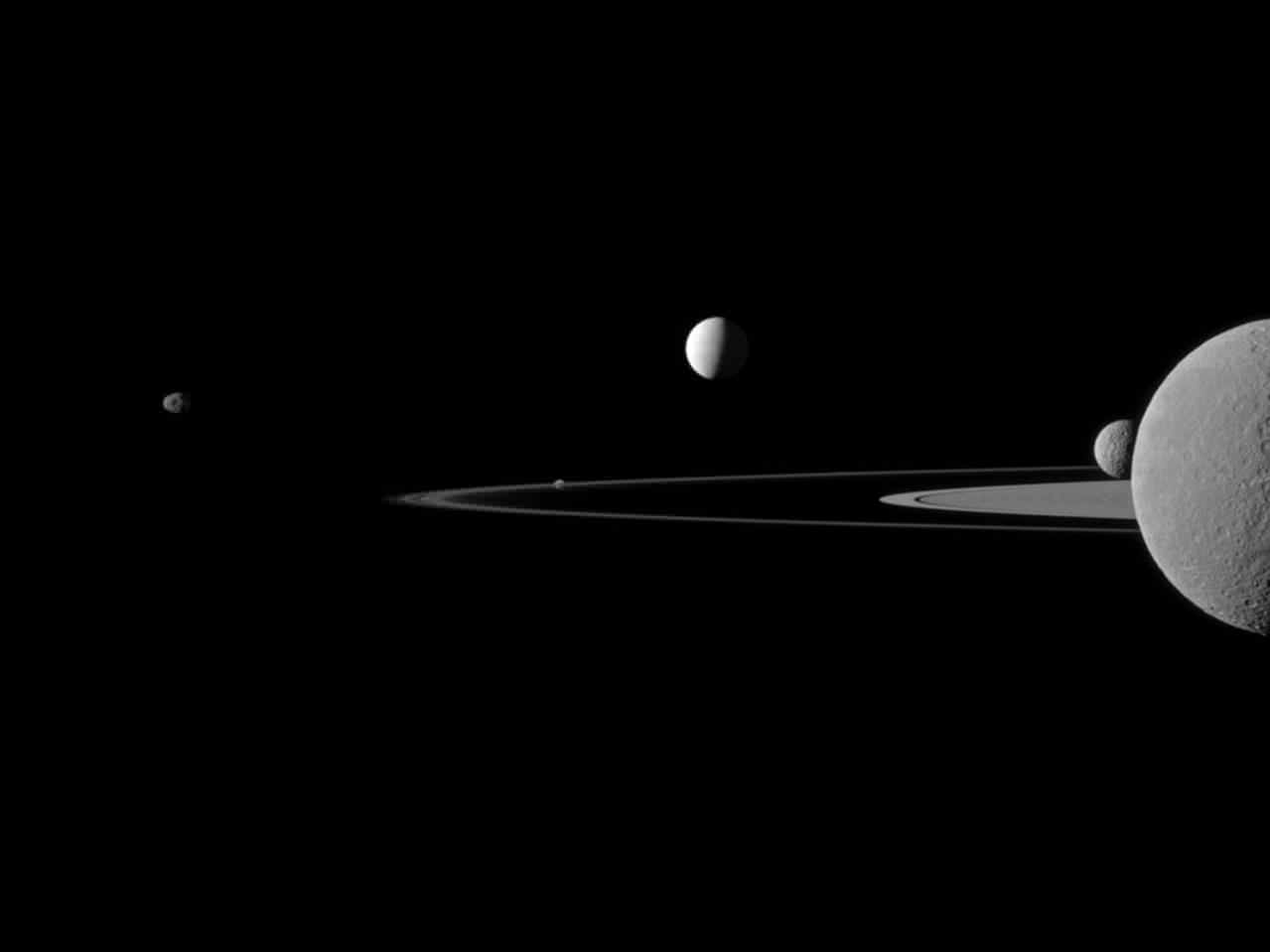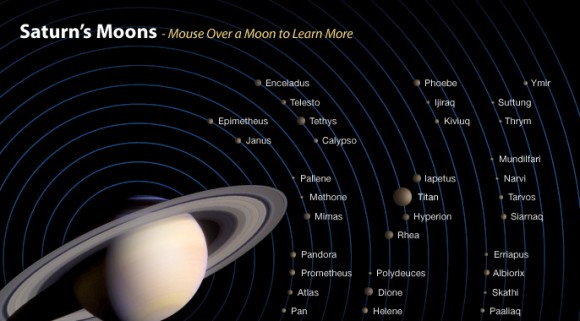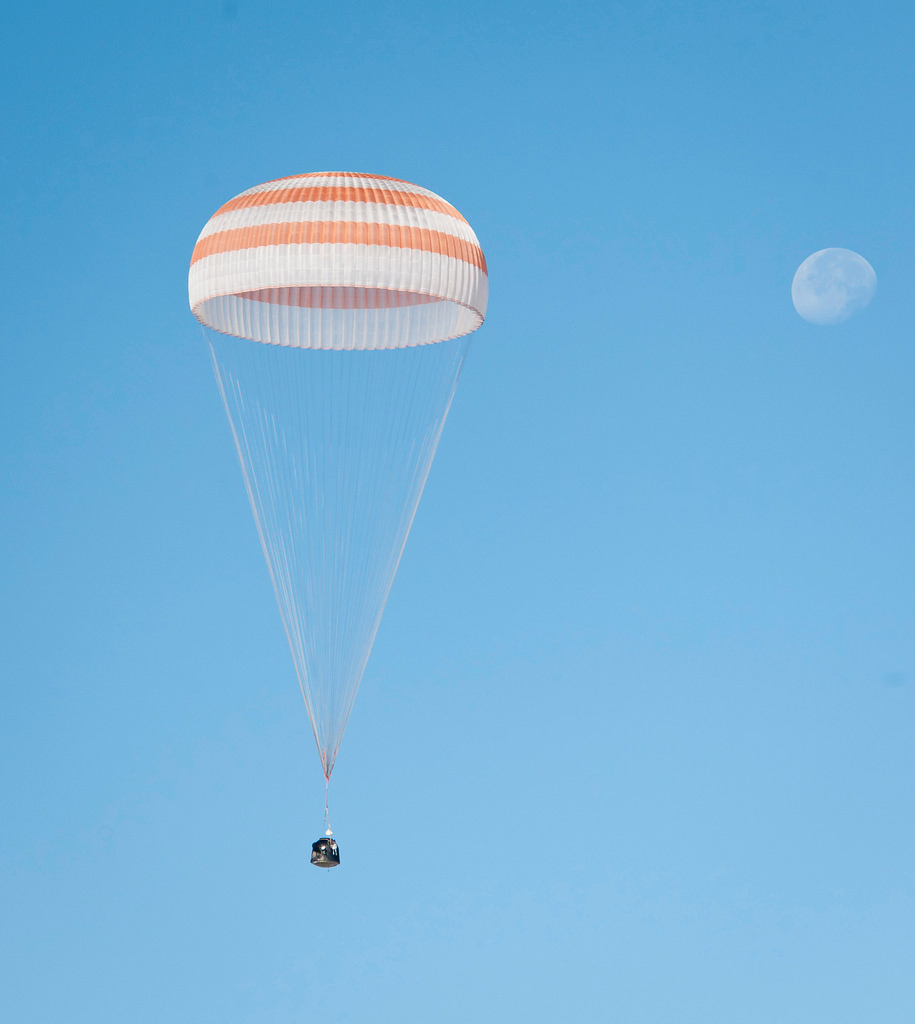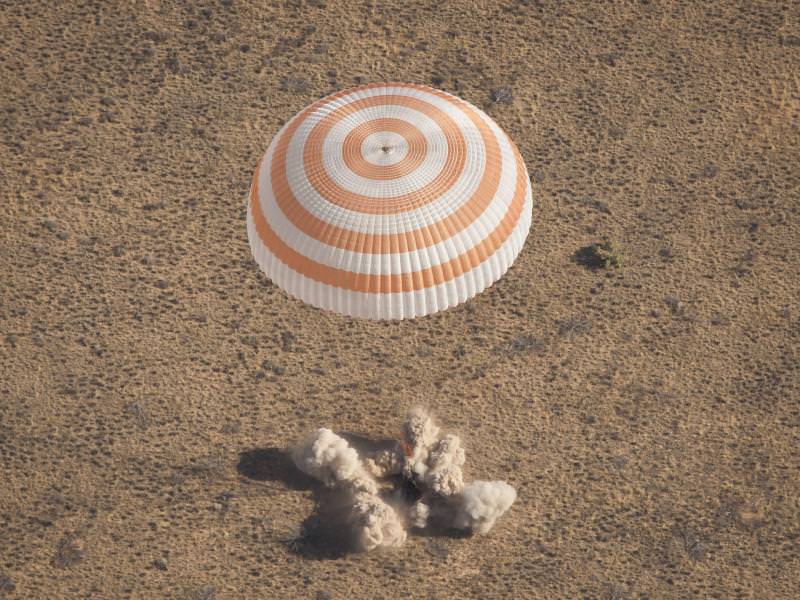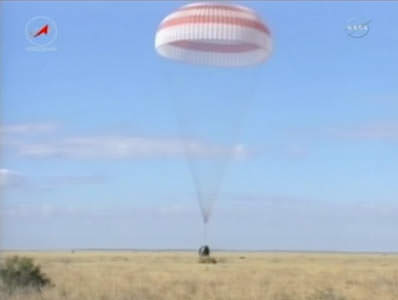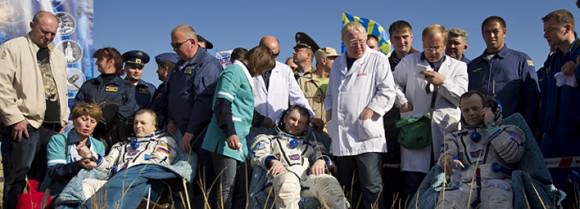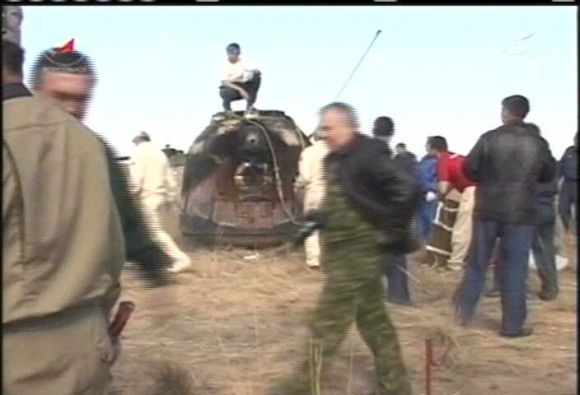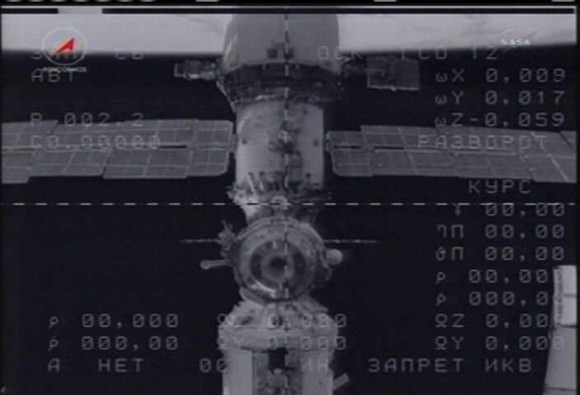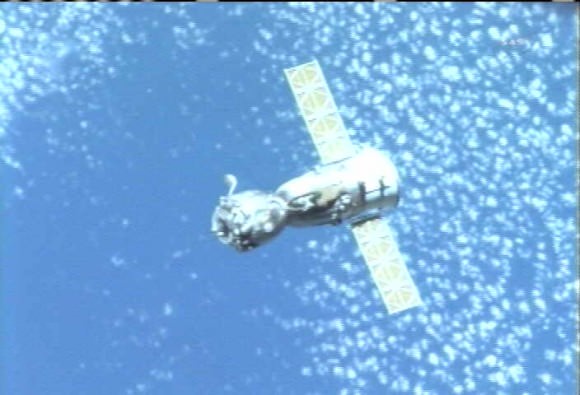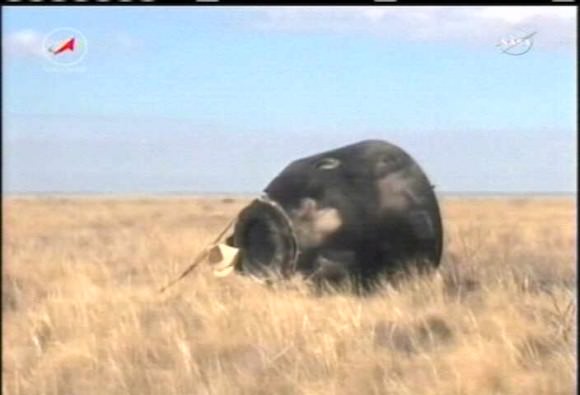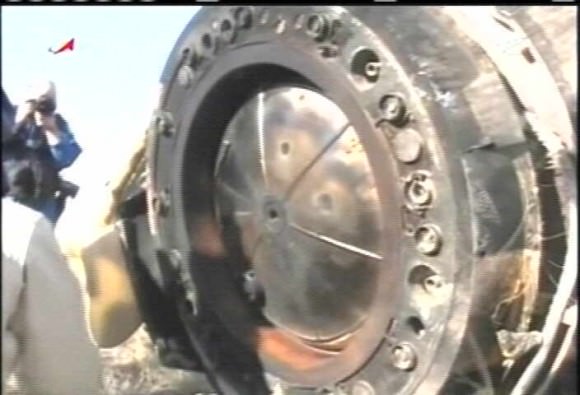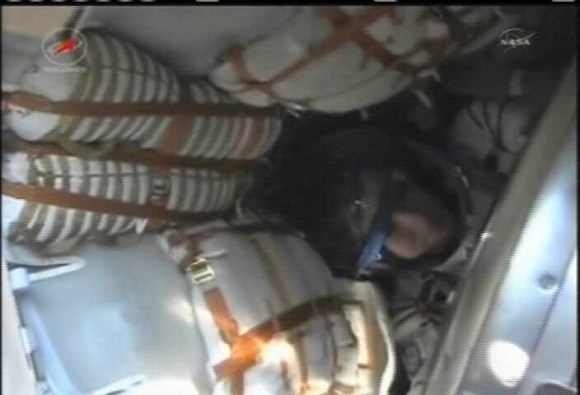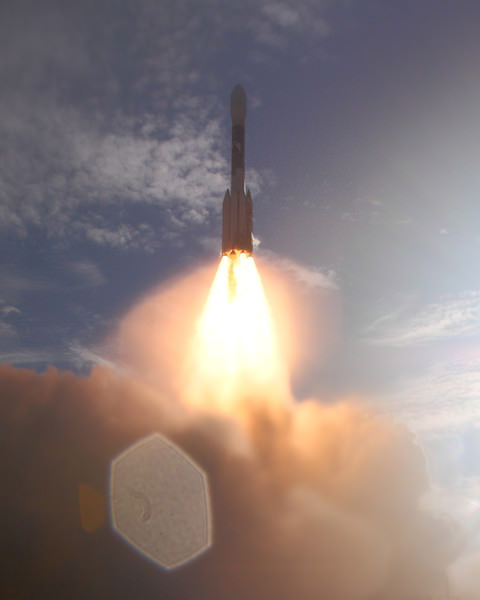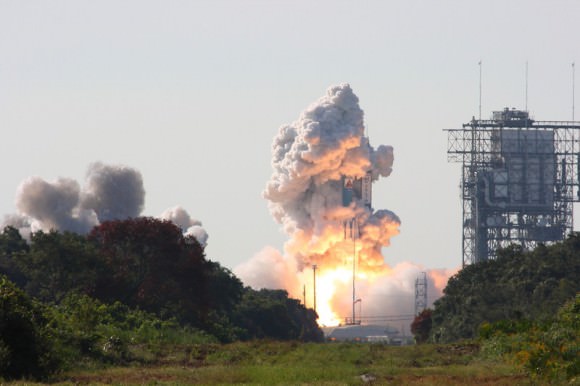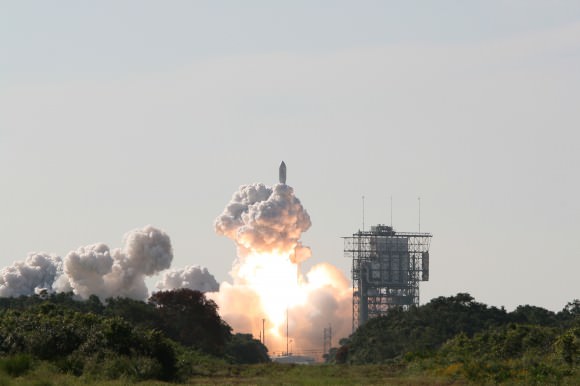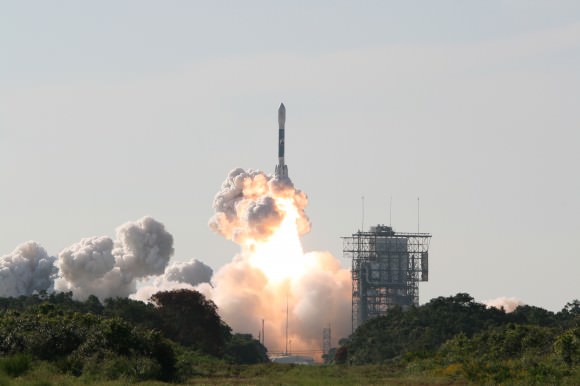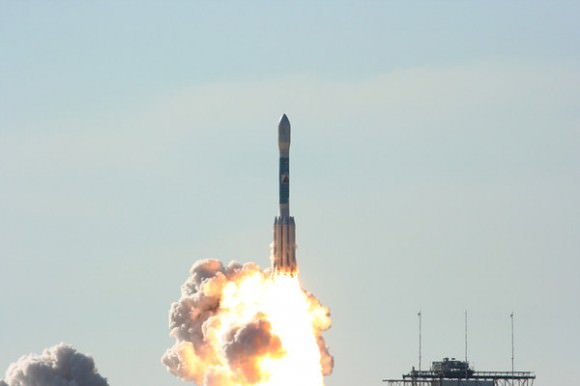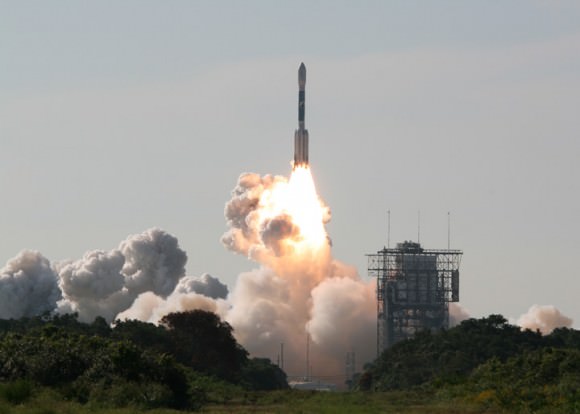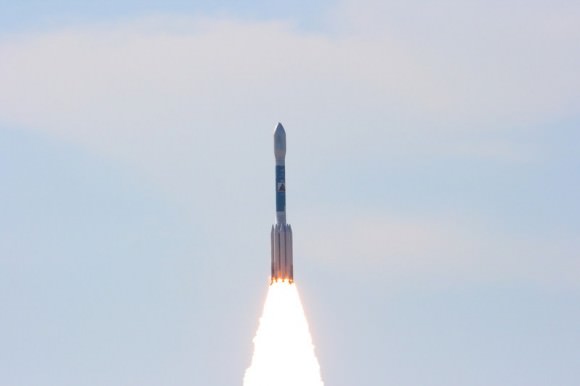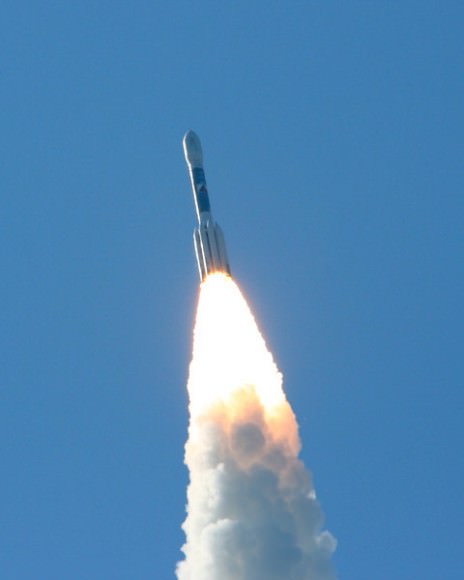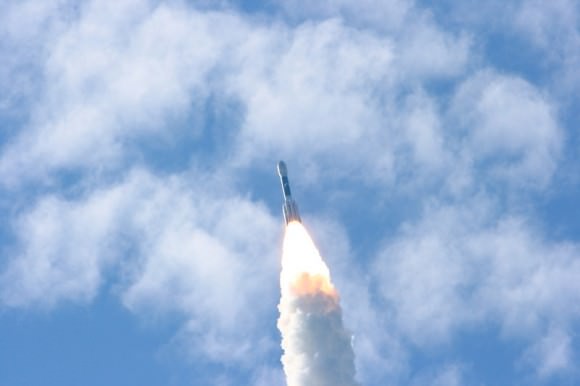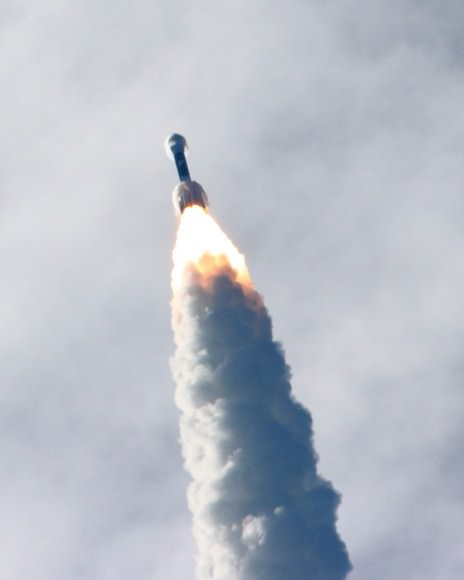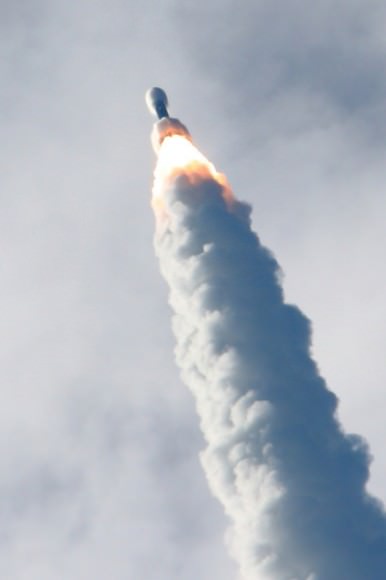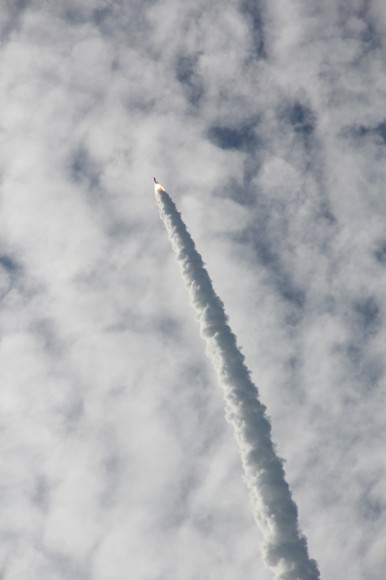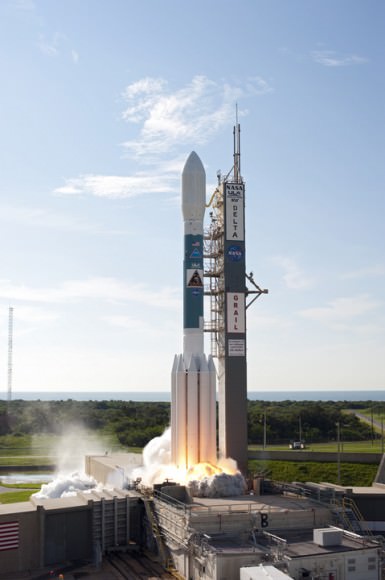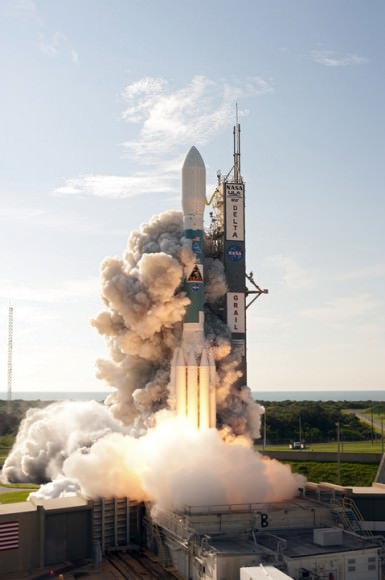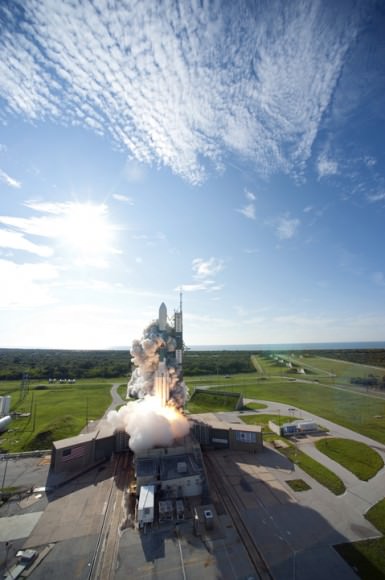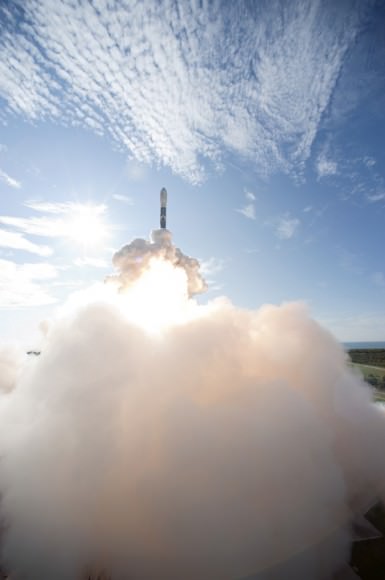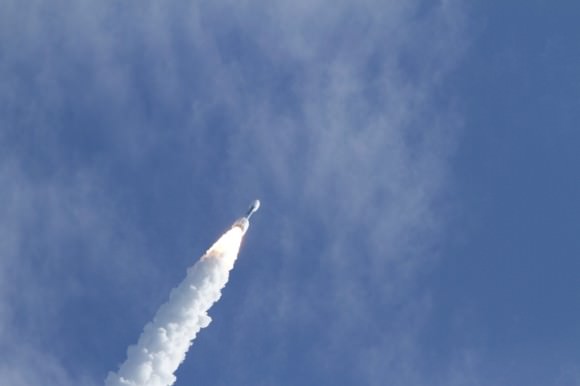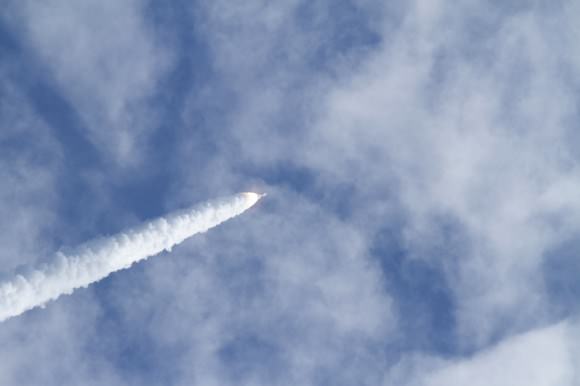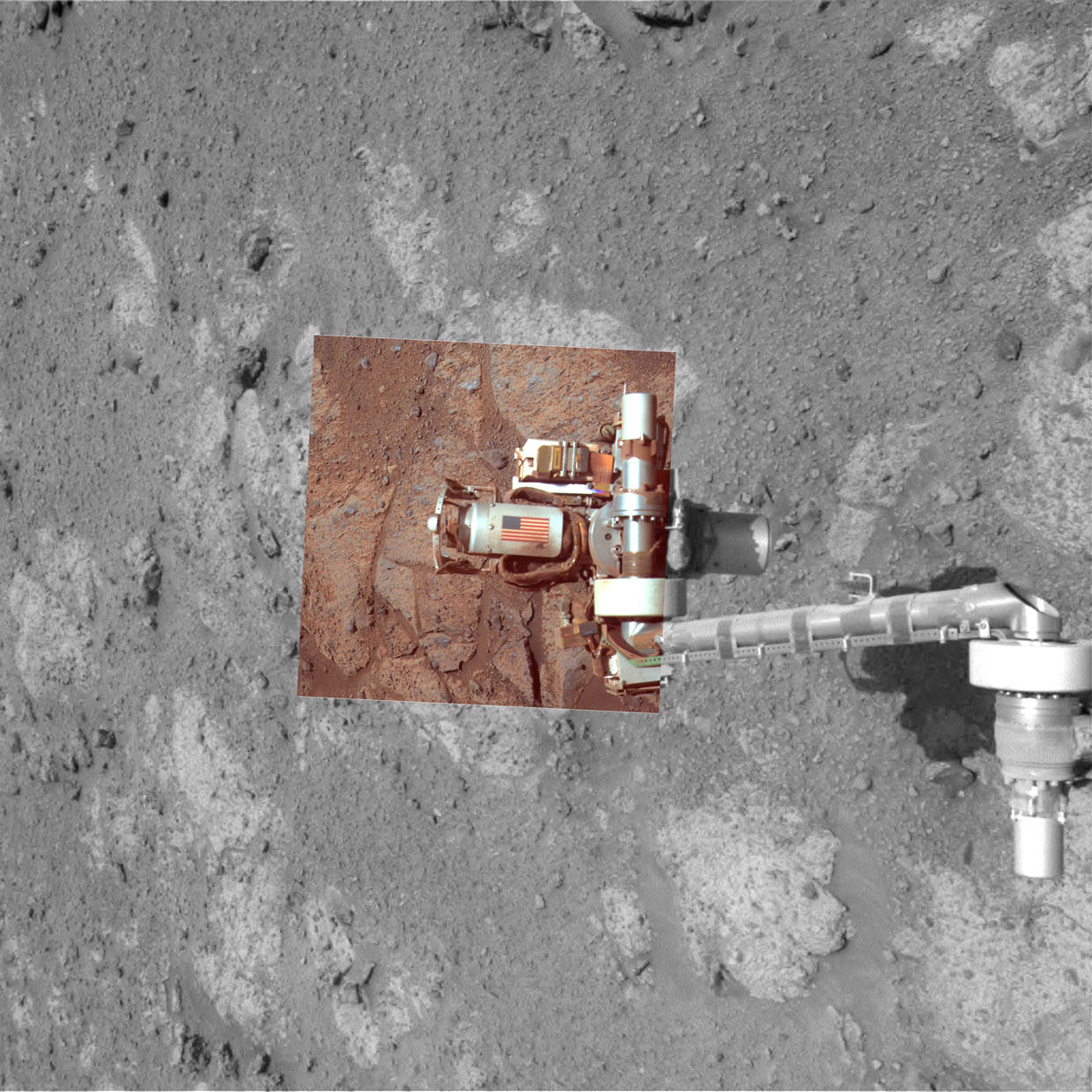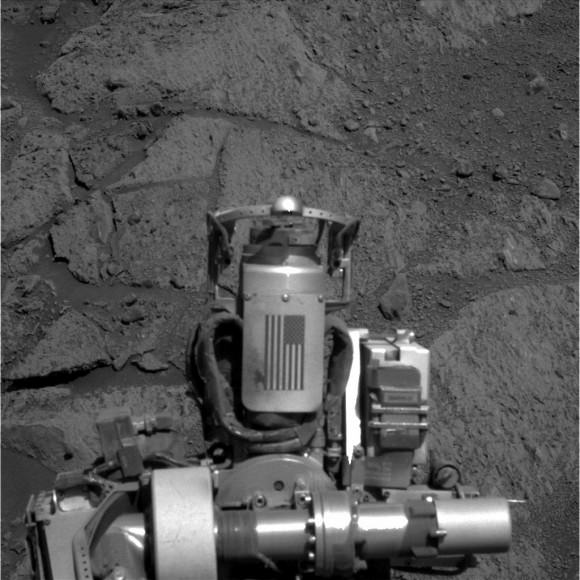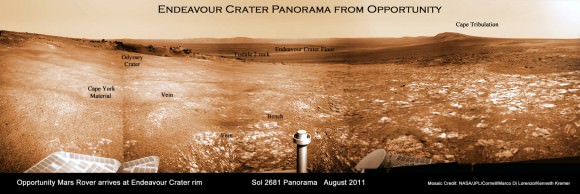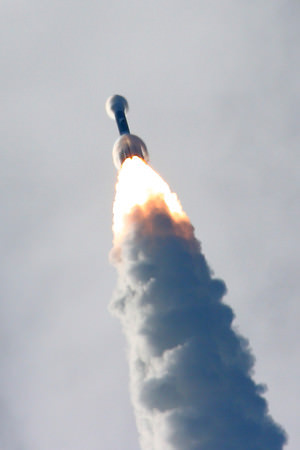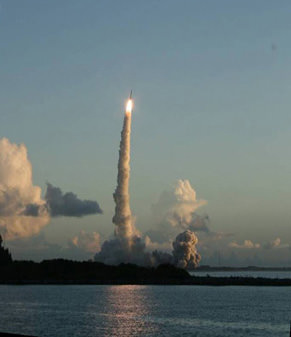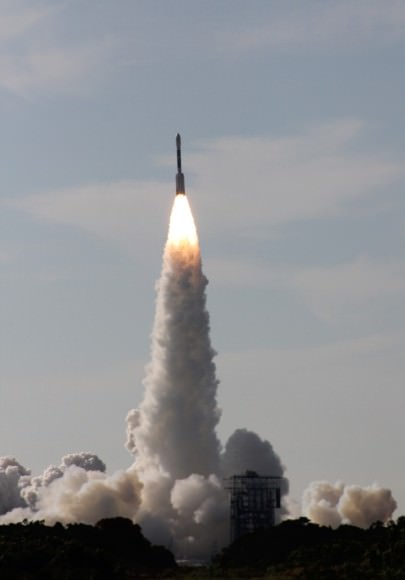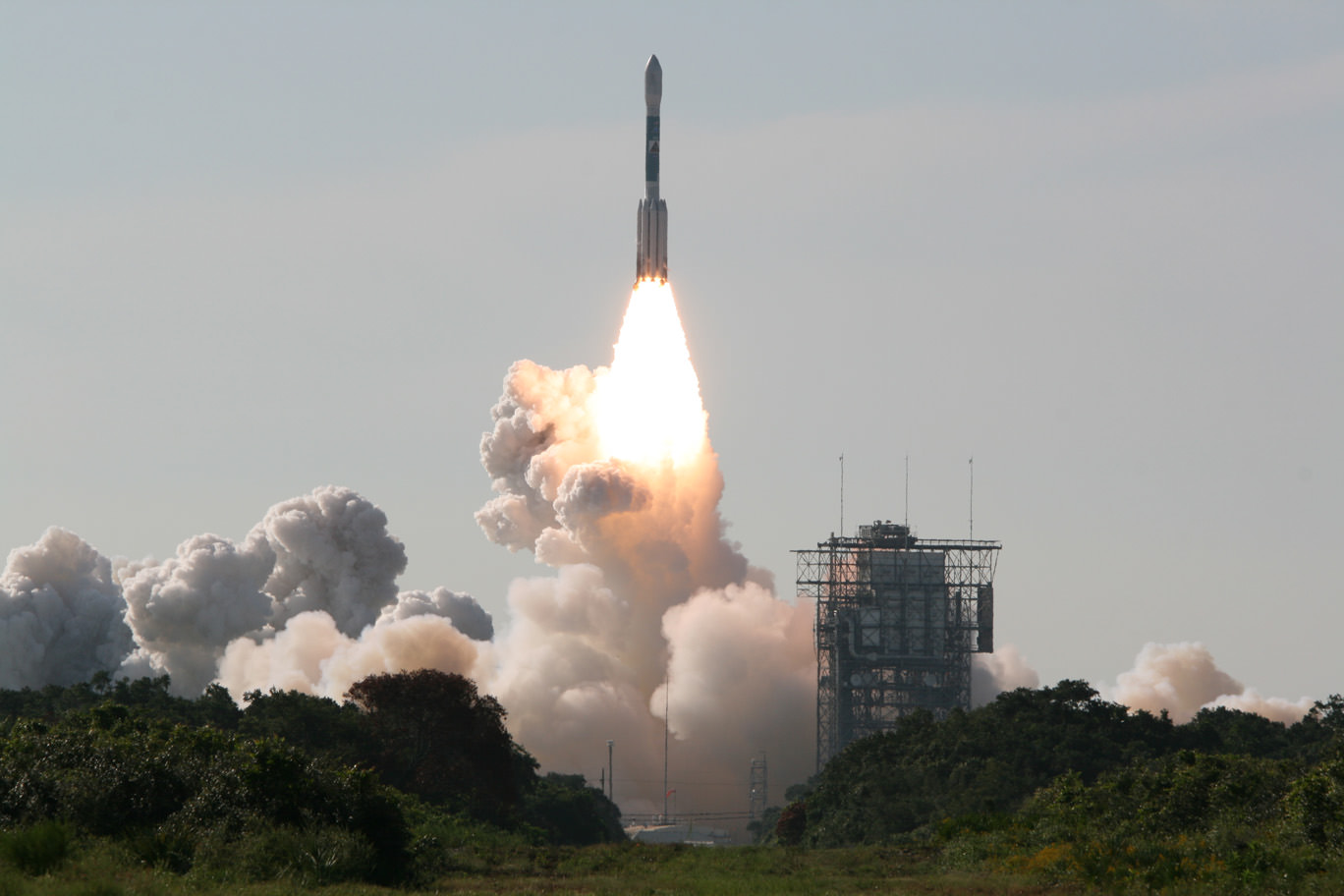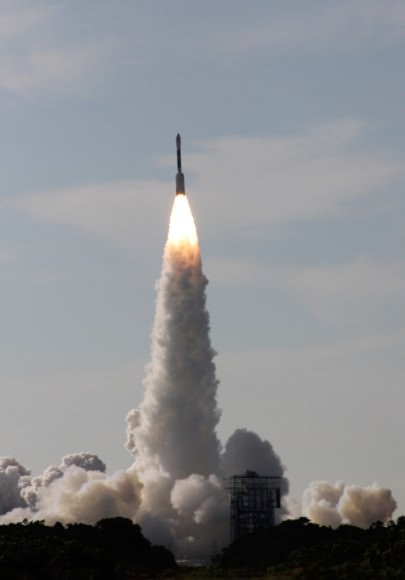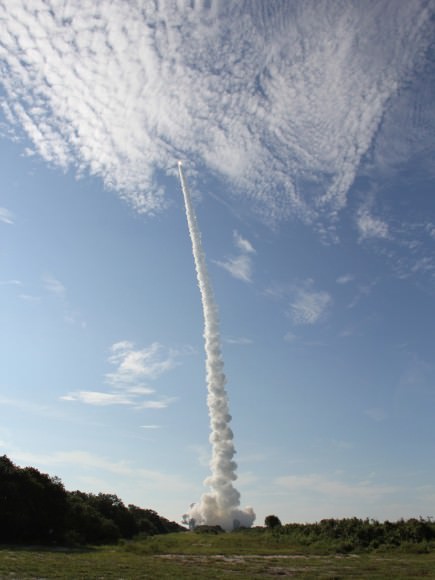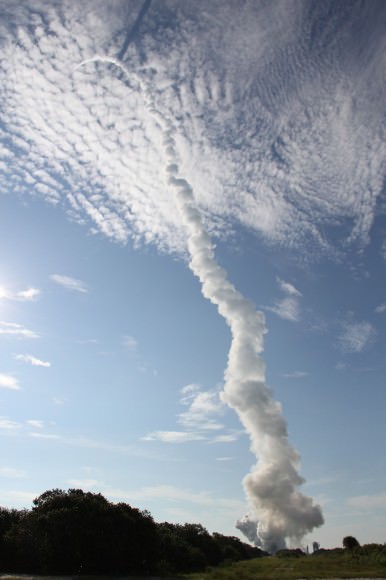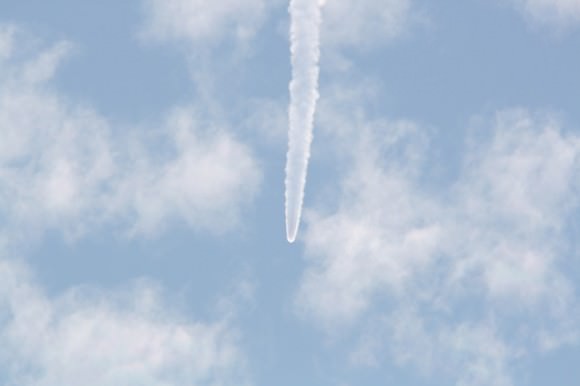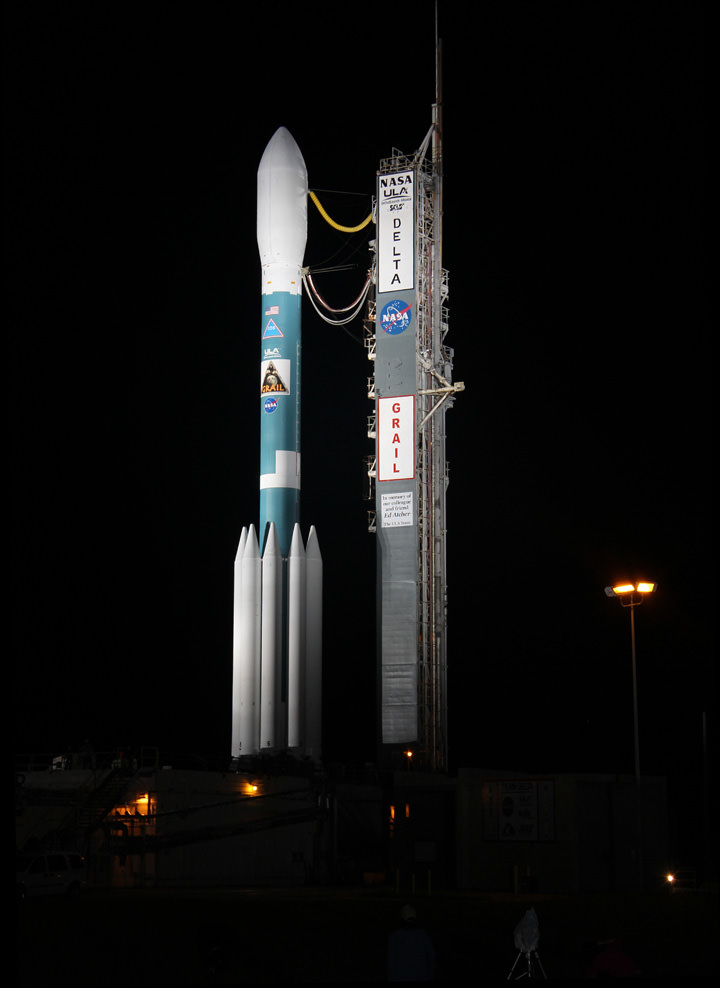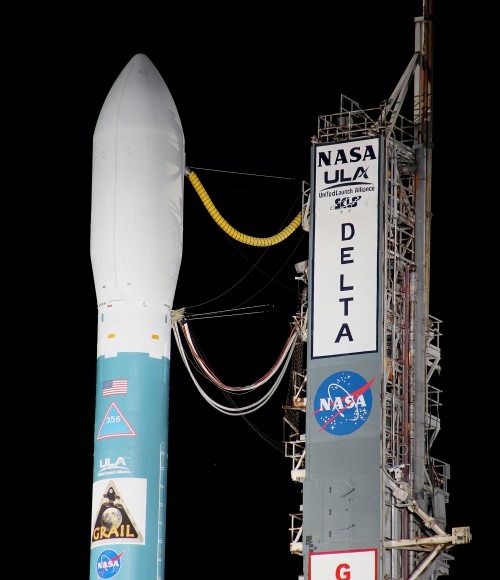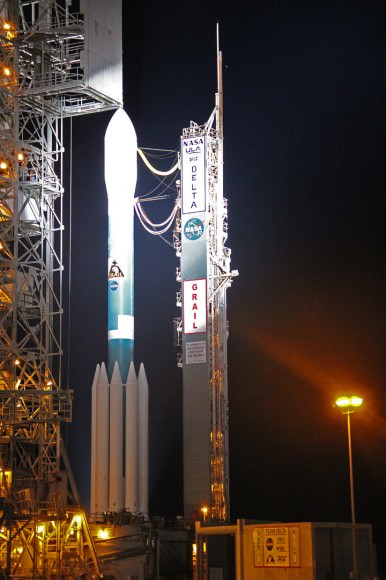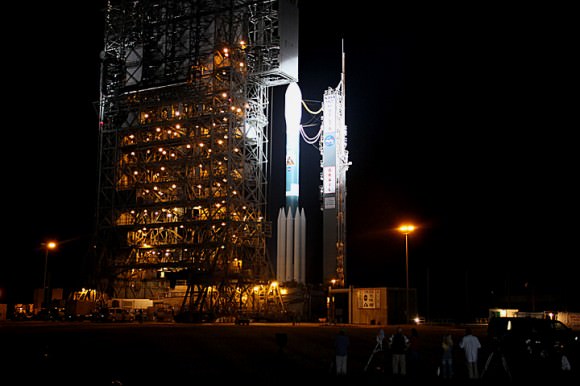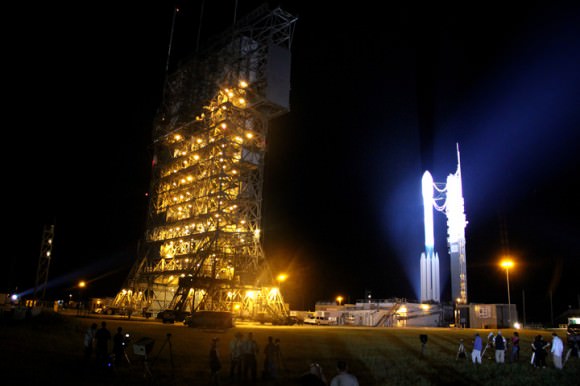[/caption]
‘Enterprise’, the first of NASA’s Space Shuttle orbiters to be assembled, was unveiled 35 Years ago on Sept. 17, 1976 to the soaring theme song and fanfare of the immortal science fiction television series – ‘Star Trek’. Members of the original cast (photo above) were on hand for the celebratory rollout at the Rockwell International manufacturing plant in Palmdale, California.
Today, the Enterprise is housed as the centerpiece at the Smithsonian’s National Air & Space Museum (NASM) Udvar-Hazy Annex in Chantilly, Virginia.
Check out these webcams for live views of shuttle Enterprise at NASM from the front and aft.
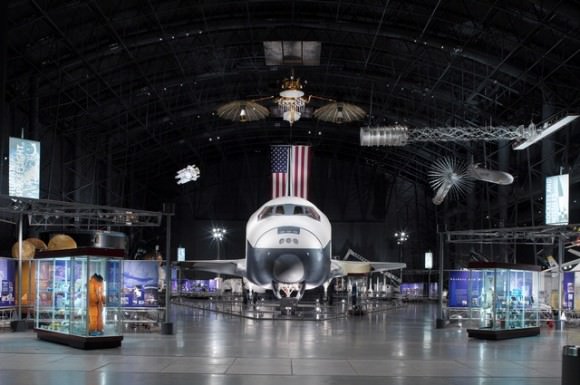
NASA originally selected ‘Constitution’ as the orbiter’s name – in honor of the U.S. Constitution’s Bicentennial . That was until avid fans of ‘Star Trek’ mounted a successful letter writing campaign urging the White House to select the name ‘Enterprise’ – in honor of the popular TV shows starship of exploration. The rest is history.
Many scientists and space enthusiasts found inspiration from Star Trek and were motivated to become professional researchers by the groundbreaking science fiction show.
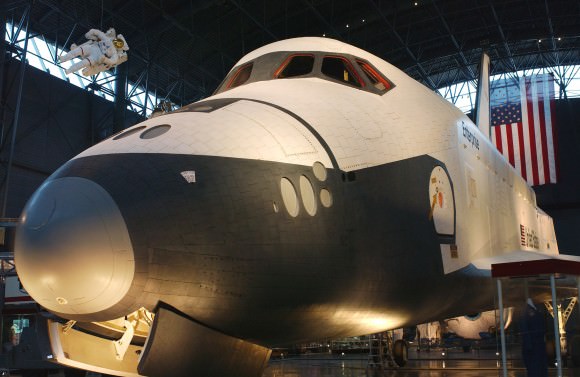
Enterprise was a prototype orbiter, designated as OV-101, and not built for spaceflight because it lacked the three space shuttle main engines necessary for launch and the thermal protection systems required for reentry into the Earth’s atmosphere.
Enterprise did however play a very key role in preparing NASA’s other shuttles for eventual spaceflight. The orbiter was tested in free flight when it was released from a Boeing 747 Shuttle Carrier Aircraft for a series of five critical approach and landing tests in 1977.I was fortunate to see Enterprise back in 1977 on top of a 747 during a cross country stop near the Johnson Space Center.
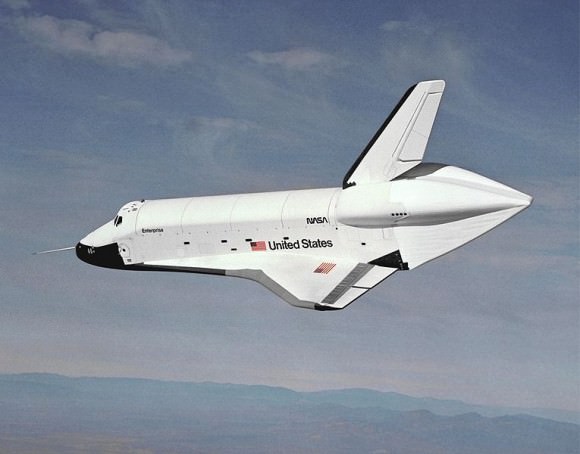
In 1979 Enterprise was mated to an External Tank and a pair of Solid Rocket Boosters for several weeks of fit checks and procedural test practice in launch configuration at Launch Complex 39 at NASA’s Kennedy Space Center in Florida.
These efforts helped pave the way for the first ever flight of a space shuttle by her sister orbiter ‘Columbia’ on the STS-1 mission by John Young and Bob Crippen. Columbia blasted off on April 12, 1981 on a gutsy 54 hour test flight.
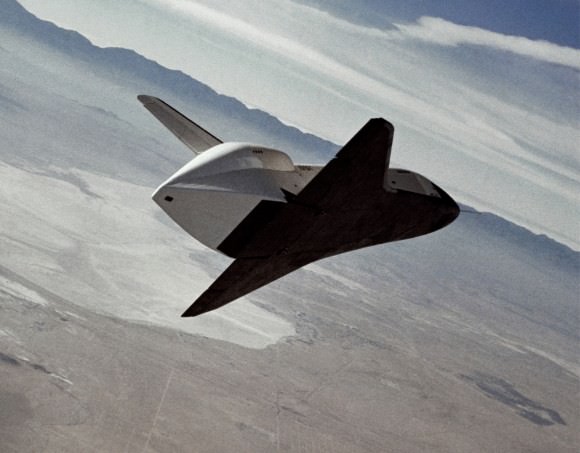
In 1984, the Enterprise was ferried to Vandenberg Air Force Base for similar pad configuration checks at Space Launch Complex- 6 (SLC-6) for what was then planned to be the shuttle’s west coast launch site. All California launches were cancelled following the destruction of Space Shuttle Challanger in Jan 1986.
After three decades of flight, the Space Shuttle Era came to a historic end with the majestic predawn touchdown of Space Shuttle Atlantis on Jul 21, 2011. The STS-135 mission was the Grand Finale of NASA’s three decade long Shuttle program.
Following the retirement of all three remaining shuttle orbiters, Enterprise will soon be moved to her new permanent home at the Intrepid Air, Sea and Space Museum in New York City to make way for NASA’s new gift of Space Shuttle Discovery.
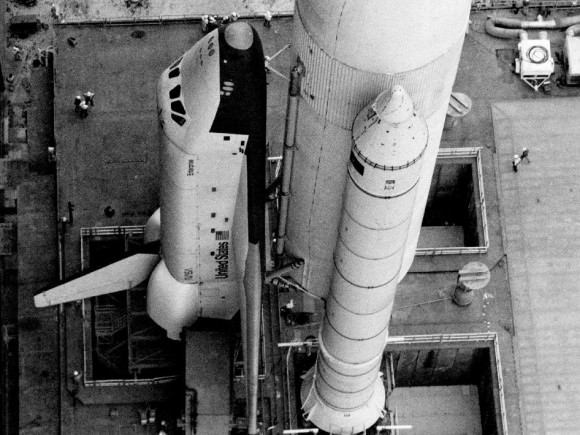
Space shuttle Enterprise made its first appearance mated to supportive propellant containers/boosters cluster, as it was rolled from the Vehicle Assembly Building at Kennedy Space Center en route to the launch pad, some 3.5 miles away, on May 1, 1979. Enterprise underwent several weeks of fit and function checks on the pad in preparation for STS-1, on which its sister craft Columbia took astronauts John Young and Robert Crippen into space for a 54-hour test mission. Credit: NASA
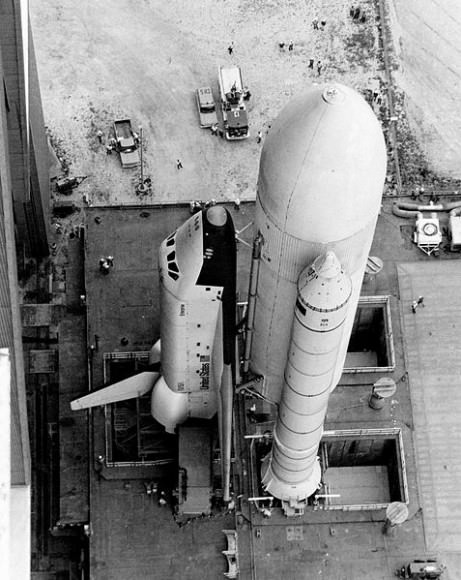
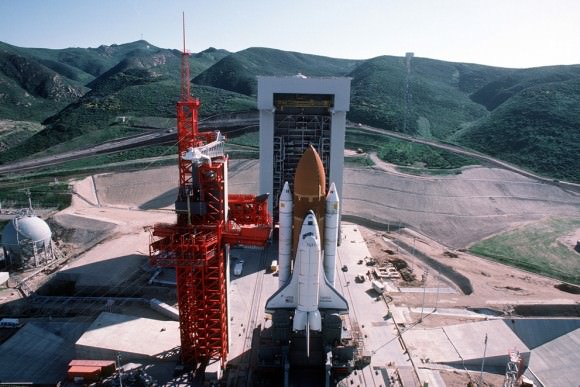
Read Ken’s continuing features here about Discovery, Endeavour and Atlantis
Send Ken your pictures of Enterprise to publish at Universe Today.

